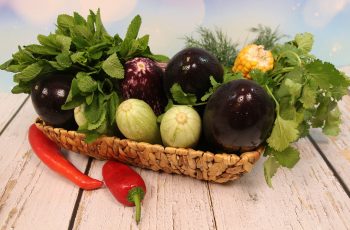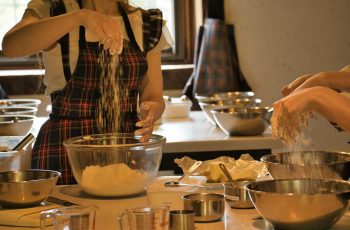Ad Blocker Detected
Our website is made possible by displaying online advertisements to our visitors. Please consider supporting us by disabling your ad blocker.
Are pressure cookers supposed to steam? This age-old question has puzzled many home cooks for years. As you embark on your culinary journey, it’s important to understand the inner workings of this powerful kitchen tool. While pressure cookers are designed to cook food quickly and efficiently, the presence of steam is a common occurrence. In fact, steam plays a vital role in the pressure cooking process, ensuring that your meals are not only flavorful but also cooked to perfection. So, let’s unravel the mystery and discover why pressure cookers are indeed meant to steam.
Understanding Pressure Cookers
How pressure cookers work
Pressure cookers work by creating a sealed cooking environment that traps steam inside. As heat is applied to the cooker, the liquid inside starts to boil and produce steam. The pressure inside the cooker rises, which increases the boiling point of the liquid, allowing the food to cook at a higher temperature than traditional cooking methods. This results in faster cooking times and more tender and flavorful dishes.
Benefits of using a pressure cooker
Using a pressure cooker comes with numerous benefits. Firstly, it significantly reduces cooking time, making it a time-saving kitchen appliance. Pressure cooking also helps retain more nutrients in food compared to other cooking methods, thanks to the shorter cooking time. Additionally, pressure cookers are versatile and can be used to cook a wide variety of dishes, from soups and stews to rice and meat dishes. They are also energy-efficient as they require less heat and time to cook. Lastly, pressure cookers are a great tool for tenderizing tough cuts of meat, making them more tender and succulent.
Different types of pressure cookers
There are two main types of pressure cookers: stovetop pressure cookers and electric pressure cookers. Stovetop pressure cookers are placed on a stovetop burner and work by using heat from the stove to generate steam and build pressure. They offer precise control over the cooking process but require constant monitoring and adjustment of the heat. Electric pressure cookers, on the other hand, are standalone appliances that can be set on a countertop. They have built-in heating elements and controls to regulate temperature and pressure. Electric pressure cookers are more convenient to use and offer programmable features for various cooking functions.
Steam Generation in Pressure Cookers
The role of steam in cooking
Steam plays a crucial role in pressure cooking. As the liquid inside the pressure cooker heats up and boils, it transforms into steam. This high-pressure steam helps transfer heat more effectively to the food, resulting in faster cooking times. Steam also helps distribute heat evenly throughout the cooker, ensuring that all parts of the food are evenly cooked. Additionally, the moisture from the steam helps keep the food moist and tender, making it ideal for cooking tougher cuts of meat or grains like rice.
Steam release mechanisms in pressure cookers
To prevent the pressure cooker from building up too much pressure, pressure cookers are equipped with steam release mechanisms. Stovetop pressure cookers usually have a weighted pressure regulator that you place on top of the vent pipe. The weight regulates the intensity of the steam release by gently rocking or whistling when the desired pressure is reached. Electric pressure cookers often have a release valve that can be manually adjusted to control the steam release.

Pressure Cooker Design and Functionality
Sealing mechanism to contain steam
One of the key components of a pressure cooker is its sealing mechanism. This ensures that steam does not escape from the cooker during the cooking process. Most pressure cookers have a rubber gasket or sealing ring that fits tightly between the lid and the pot. When the cooker is pressurized, the gasket expands and creates an airtight seal, preventing any steam from escaping. It is important to check and clean the gasket regularly to ensure its effectiveness.
Pressure regulator to control steam pressure
The pressure regulator is responsible for controlling the steam pressure inside the pressure cooker. In stovetop pressure cookers, the regulator is a weighted valve that sits on the vent pipe. It is designed to release excess steam to maintain a steady pressure inside the cooker. The weight of the valve determines the pressure at which the steam is released. Electric pressure cookers have a pressure sensor and control panel that allow you to set and adjust the desired pressure level.
Safety features to prevent steam accidents
Pressure cookers are equipped with various safety features to prevent accidents caused by excessive pressure buildup. Stovetop pressure cookers often have a pressure release valve, which is a small hole or button that allows steam to escape if the pressure becomes too high. Additionally, some pressure cookers have locking mechanisms that prevent the lid from being opened while there is pressure inside the cooker. Electric pressure cookers have built-in sensors that monitor the pressure and temperature, automatically releasing steam if the pressure exceeds safe levels.
Cooking with a Pressure Cooker
Using the pressure cooker as a steamer
A pressure cooker can also be used as a steamer, allowing you to cook food using the power of steam alone. To use your pressure cooker as a steamer, simply add water to the pot, place a steamer basket or trivet inside, and arrange your food on top. As the water boils and generates steam, it will cook the food without submerging it in liquid. This method is great for cooking vegetables, seafood, and even desserts like puddings or cakes.
Steam cooking vs. pressure cooking
While pressure cooking and steam cooking both utilize steam, there are some differences between the two methods. Steam cooking typically involves using a dedicated steamer or steaming basket, where the food is placed above boiling water and cooked by the hot steam. Pressure cooking, on the other hand, involves cooking food under high-pressure steam generated inside a sealed pot. Pressure cooking offers faster cooking times and more intense flavors due to the high-pressure environment.
Recommended cooking times for different foods
The cooking times for various foods in a pressure cooker can vary. Some general guidelines include cooking meats like chicken or beef for around 20-30 minutes per pound, depending on the desired tenderness. Vegetables usually require shorter cooking times, typically around 2-5 minutes, to retain their texture and color. Grains like rice or quinoa can be cooked in just a few minutes, while beans and legumes may require longer cooking times to soften. It is always advisable to consult specific pressure cooker recipes or cooking charts for accurate cooking times.

Common Steam-related Questions
Should steam always be produced in a pressure cooker?
Yes, steam should always be produced in a pressure cooker during the cooking process. The buildup of steam is what creates the high-pressure environment inside the cooker, allowing for faster and more efficient cooking. If you notice that there is no visible steam being released from the pressure cooker, it could be an indication that the sealing mechanism is not properly sealed or that the pressure regulator needs adjustment. In such cases, it is important to troubleshoot the issue to ensure the cooker is functioning correctly.
What to do if there is no visible steam?
If there is no visible steam being produced in your pressure cooker, it is essential to check for any issues that may be preventing the proper generation of steam. Make sure that the lid is properly sealed and the gasket is clean and undamaged. Also, ensure that there is enough liquid in the cooker, as insufficient liquid may hinder steam production. If these steps do not resolve the issue, consult the manufacturer’s instructions or contact their customer support for further assistance.
Steam release during pressure cooking
During pressure cooking, steam is released through the pressure release valve to maintain the desired pressure level inside the cooker. The release of steam can be gradual or intermittent, depending on the type of pressure cooker you are using. It is normal for the pressure cooker to hiss or release steam periodically during the cooking process, indicating that the pressure is being regulated. However, if you notice a continuous release of steam or if the pressure release seems excessive, it may be a sign of an issue with the pressure cooker that needs to be addressed.
Troubleshooting Steam Issues
Cooker not reaching proper pressure
If your pressure cooker is not reaching the proper pressure, there are a few potential causes to consider. Check that the lid is securely locked and the sealing ring is properly clean and positioned. Ensure that there is enough liquid in the cooker, as insufficient liquid can prevent the buildup of steam and pressure. Additionally, confirm that the pressure release valve is not blocked or clogged. If these troubleshooting steps do not resolve the issue, it may be necessary to consult the manufacturer’s instructions or seek professional assistance.
Steam escaping from the sides
If you notice steam escaping from the sides of your pressure cooker, it indicates a problem with the sealing mechanism. Check that the gasket or sealing ring is clean and undamaged, and ensure that it is properly seated between the lid and the pot. Make sure that the locking mechanism is engaged and holding the lid securely in place. If steam continues to escape, there may be an issue with the gasket or the pressure cooker itself, and it is advisable to seek professional help or contact the manufacturer.
Steam release valve not functioning correctly
If the steam release valve on your pressure cooker is not functioning correctly, it can affect the cooking process and potentially pose a safety risk. First, make sure that the valve is clean and not blocked by any food debris or residue. Check that it moves freely and is not stuck in a closed or open position. If the valve still does not function correctly, consider contacting the manufacturer for guidance or possibly replacing the valve if necessary.

Preventing Steam Accidents
Proper maintenance and cleaning of pressure cookers
To prevent steam accidents, it is crucial to maintain and clean your pressure cooker regularly. After each use, disassemble the cooker and thoroughly clean all the parts, including the lid, gasket, and pressure release valve. Check for any signs of wear or damage and replace any worn-out parts promptly. It is also important to follow the manufacturer’s instructions regarding maintenance and cleaning to ensure the longevity and safe operation of your pressure cooker.
Ensuring correct sealing and locking of the cooker
Proper sealing and locking of your pressure cooker are essential for safe and effective cooking. Before cooking, ensure that the gasket or sealing ring is clean, undamaged, and correctly positioned. Make sure the lid is securely locked into place and the locking mechanism is engaged. A properly sealed and locked pressure cooker will prevent steam from escaping and minimize the risk of accidents.
Handling steam release with caution
When it comes to releasing steam from your pressure cooker, it is vital to exercise caution to avoid burns or scalds. Always follow the manufacturer’s instructions for releasing steam and use appropriate utensils, such as long-handled tongs or a wooden spoon, to avoid direct contact with the hot steam. Make sure to release steam away from your face or body to prevent any potential injuries. Allow the pressure to release fully and ensure that the cooker is depressurized before opening the lid.
Tips for Using Pressure Cooker Steam
Retaining nutrients in steamed food
To retain the maximum amount of nutrients when steaming food in a pressure cooker, it is important to minimize the cooking time. The shorter cooking time in a pressure cooker helps preserve the vitamins and minerals compared to traditional cooking methods that require longer cooking times. Additionally, using a minimal amount of water and cutting vegetables into larger pieces can help retain more nutrients during the steaming process.
Flavoring food with aromatic ingredients while steaming
One of the great advantages of steaming food in a pressure cooker is that you can infuse it with flavors by adding aromatic ingredients. For example, you can place herbs, spices, or citrus slices on top of the food in the steamer basket to impart a delightful aroma. The steam generated during cooking will carry these flavors and enhance the overall taste of your dish.
Using a trivet or steaming basket
When steaming in a pressure cooker, using a trivet or steaming basket can help elevate the food above the water, allowing for better steam circulation. This prevents the food from getting waterlogged and ensures even cooking. A trivet or steaming basket also makes it easier to remove the food from the cooker once it is cooked, as it prevents the food from sticking to the bottom of the pot.
Other Uses of Pressure Cookers
Using pressure cookers for canning
Pressure cookers are commonly used for canning fruits, vegetables, and other perishable foods. The high-pressure environment inside the pressure cooker ensures that the food is processed at a temperature sufficient to kill any bacteria or microorganisms that could cause spoilage. Canning in a pressure cooker allows for longer shelf life and preservation of the food’s flavor and nutritional value.
Making homemade yogurt in a pressure cooker
A pressure cooker can be used to create the ideal environment for making homemade yogurt. By placing a sealed jar containing the yogurt mixture inside the pressure cooker filled with warm water, the temperature can be maintained at the optimum level for yogurt fermentation. The steam generated in the pressure cooker creates a warm, moist environment that promotes the growth of beneficial bacteria, resulting in delicious homemade yogurt.
Steam sterilization of baby bottles and utensils
Pressure cookers can be a valuable tool for sterilizing baby bottles, pacifiers, and other utensils. By using the pressure cooker to create high-pressure steam, you can effectively kill bacteria and germs, ensuring that your baby’s feeding equipment is safe and clean. This method allows for quick and efficient sterilization, providing peace of mind to parents.
Conclusion
Pressure cookers are designed to generate steam, which plays a crucial role in the cooking process. By understanding how steam is produced, controlled, and utilized in pressure cooking, you can make the most of this versatile kitchen appliance. Whether you’re looking to speed up cooking times, retain nutrients in your food, or explore various cooking techniques, harnessing the power of steam in a pressure cooker opens up a world of culinary possibilities. So next time you use your pressure cooker, embrace the steam and elevate your cooking experience.

